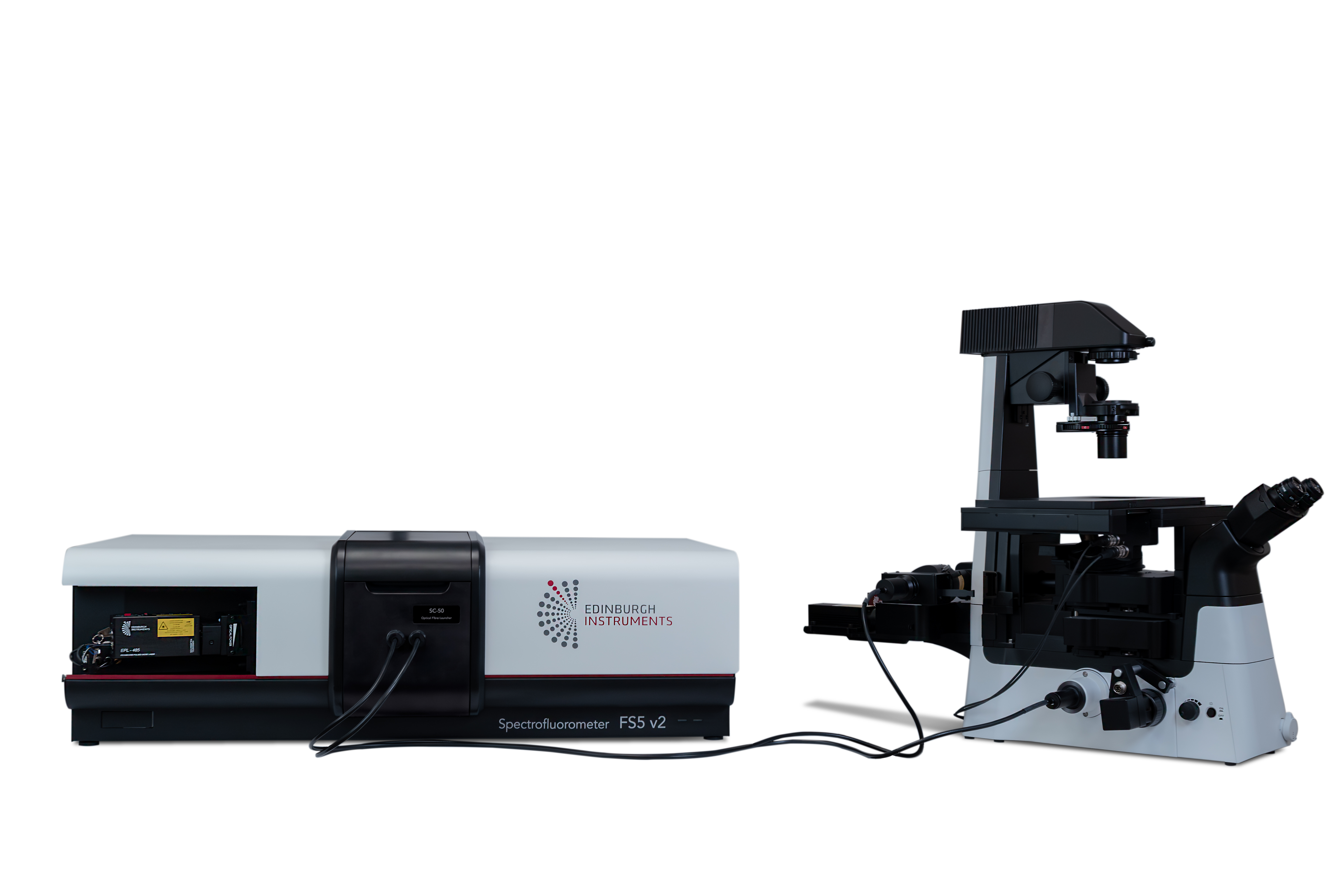
Send us your samples, and we can measure them live in an online demonstration
Contact us to arrange an online demonstration
"*" indicates required fields
The MicroPL Fluorescence Microscopy Upgrade for Edinburgh Instruments Spectrometers such as the FLS1000 or FS5 allows the study of spectral or time-resolved photoluminescence of samples in the microscopic scale.
An Edinburgh Instruments photoluminescence (PL) spectrometer is converted into a combined spectrometer and microscope system with this user-friendly upgrade.
A wide range of microscope configurations, source coupling and detector options are available enabling both steady state and fluorescence lifetime microscopy, as well as automated maps, using the same setup.
It is also possible to couple your own microscope to the FLS1000 or FS5 for a custom MicroPL upgrade (please get in touch for models supported).
Every MicroPL is equipped with a computer-controlled XYZ stage includes the FluoracleMap software package. This software add-on allows acquiring 2D, 3D and surface maps of photoluminescence lifetimes, as well as complex data analysis such as multiexponential decay fitting and a wide range of map display options.
Widefield excitation uses a liquid light guide coupling to the spectrometer to excite the full field of view of the objective.

Point excitation can be performed with either CW or pulsed lasers for spectral or lifetime PL measurements. MicroPL is compatible with Edinburgh Instruments EPL, HPL, and VPL diode lasers. A spot size of ~2 μm (source and objective dependent) is achievable, enabling to resolve PL spectra and lifetimes in the micrometer scale.
Both Time-Correlated Single Photon Counting (TCSPC) and Multi-Channel Scaling (MCS) operating modes are compatible, covering a wide range of photoluminescence lifetimes, from a few ps up to seconds. Non-standard applications such as upconversion PL microscopy are possible with the appropriate choice of filters and laser coupling.

MicroPL can be configured with a computer-controlled XYZ stage for Fluorescence Lifetime Imaging Microscopy (FLIM). The FLIM add-on unlocks special features in the Fluoracle software (FluoracleMap) including control of the stage and advanced analysis options for maps, such as multi-component decay fitting algorithms. No additional software packages are required to obtain and analyse data.
| Specifications | |
|---|---|
| Microscope Models | Upright: Nikon NiU, Olympus BX53 Inverted: Nikon Ti2U |
| Excitation/Emission Range | 360 nm - 850 nm (std) Can be extended with non-standard UV and NIR objectives |
| Excitation Modes | Widefield: Tunable continuous source from spectrometer (steady state) Point: EPL/HPL/VPL pulsed lasers (TCSPC or MCS lifetimes) and CW lasers (steady state) |
| Detection Modes | Micro-PL spectroscopy with spectrometer Fluorescence Microscopy with additional camera |
| Objective Magnification | Options available from 5X to 100X |
| Sample Stage | Manual or PC-controlled XYZ stage with specifications: 75 mm x 50 mm or 130 mm x 85 mm options XY resolution 0.01 µm Z resolution 0.002 µm |
| Software | Mapping features in Fluoracle included with PC-controlled XYZ stage |
| Accessories | Software-controlled cryostat upgrade |